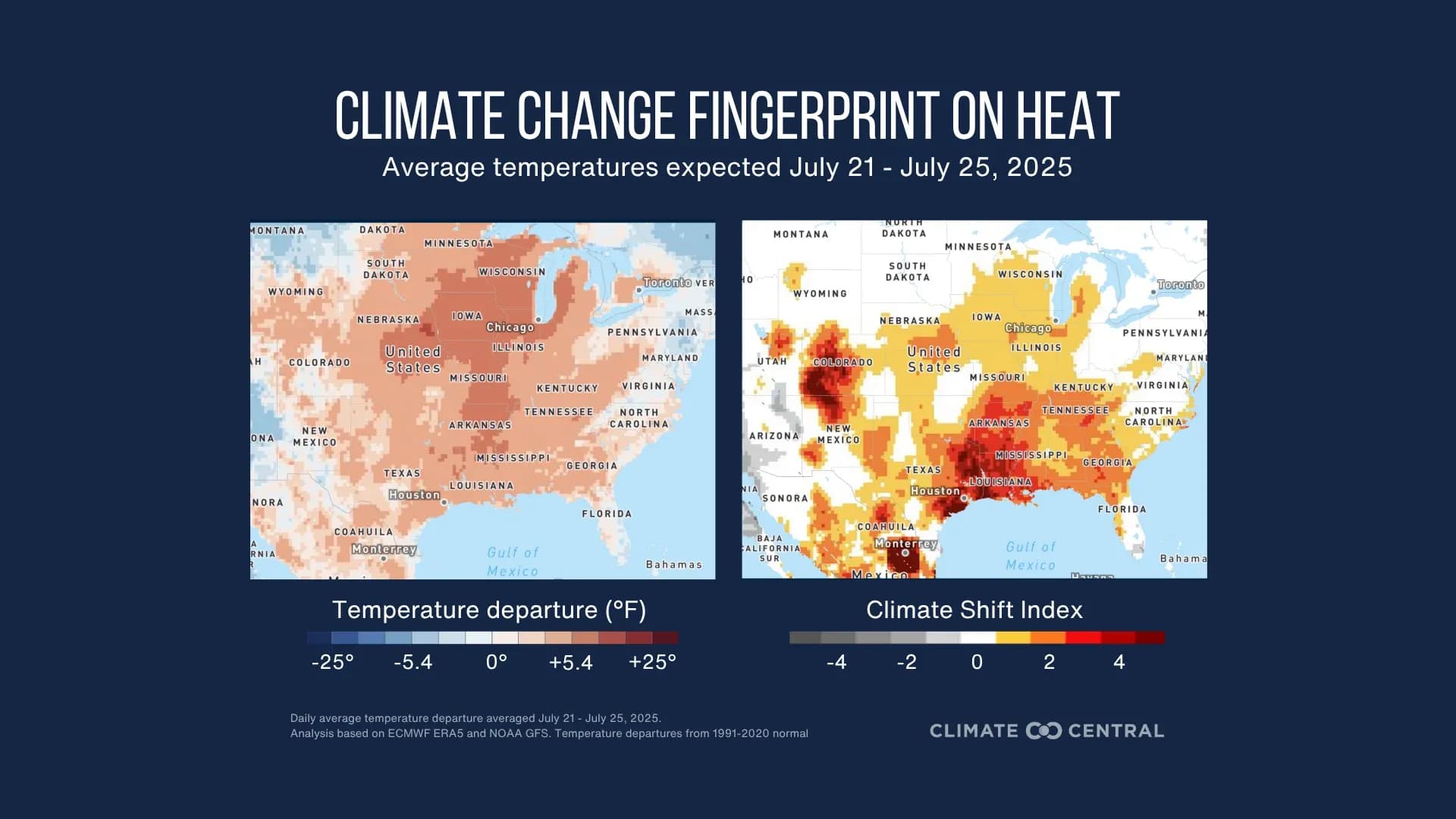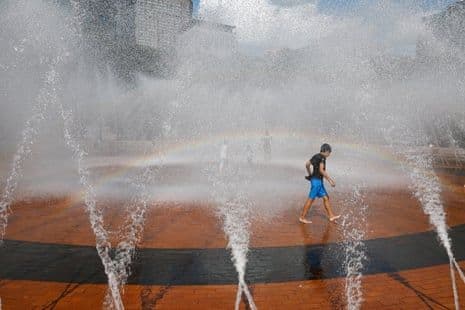Beyond the Thermometer: Unpacking Our New Era of Extreme Heat
Climate change transforms summer heat. Discover the science of extreme temps, what CSI levels mean, and how to stay safe in our warming world.
The Summer Heat That's Not Your Grandparent's
The summer heat gripping large swaths of the United States from July 21 to 25 isn't just another hot spell; it's a stark illustration of how human-caused climate change is reshaping our experience of summer. What began in the Southeast quickly expanded, engulfing the mid-South and Midwest, impacting nearly half the U.S. population. This isn't the familiar July warmth many recall from decades past. Dr. Kristina Dahl, VP of Science at , put it plainly: "This is not your grandmother's heat wave." She emphasizes that climate change is making these events significantly hotter and, crucially, more dangerous. We're seeing triple-digit highs across states like , , and , with mid-to-upper 90s stretching into the lower Midwest and potentially the Northeast. Compounding the danger, intense humidity in the Central Plains and Mississippi and Ohio valleys will push heat index values to a suffocating 105°F to 110°F. Even overnight, relief is elusive, with lows in the mid-70s to low 80s—up to 15°F above average—threatening to break record high minimums across numerous southern states. This persistent, amplified heat, anchored by a formidable heat dome, signals a profound shift in our climate reality.
Decoding the Climate Shift Index: The Science of Attribution
Understanding the profound impact of climate change on our daily weather requires more than just observing rising temperatures; it demands a scientific lens capable of attributing specific events to global warming. This is where tools like the become indispensable. The CSI, built on peer-reviewed methodology and real-time data, quantifies precisely how much human-caused climate change has increased the likelihood of a particular day's temperature. For the recent heat event, a analysis revealed that this excessive heat was made at least three times more likely for nearly 160 million people. Even more strikingly, wide areas from to are experiencing CSI levels of 5 – the highest possible – indicating that human-caused climate change made this extreme heat at least five times more probable. This isn't just about general warming; it's about connecting the dots between our emissions and the immediate, tangible changes in our local weather patterns. The CSI provides a robust, scientific framework for communicating this critical link, moving beyond vague notions of 'climate change' to concrete, attributable impacts on the heat we endure.
Beyond the Thermometer: The Hidden Dangers of Modern Heatwaves
While triple-digit temperatures are alarming, the true danger of modern heatwaves extends far beyond the number on the thermometer. It’s the insidious combination of factors that climate change amplifies, creating conditions far more perilous than past heat events. One critical element is humidity. When high temperatures merge with high humidity, our bodies struggle to cool down through sweat evaporation, leading to dangerously elevated heat index values that can soar to 105°F to 110°F. This is a primary driver of heat-related illnesses like cramps, exhaustion, and potentially fatal heat stroke. Even more concerning are the unusually warm overnight lows. Historically, cooler nights offered a crucial reprieve, allowing bodies and infrastructure to recover. But with minimum temperatures remaining elevated by 5°F to 15°F above average, and even threatening record high minimums, this vital recovery period is shrinking. This relentless, 24/7 heat stress puts immense strain on human health, especially for vulnerable populations, and on power grids, which can buckle under sustained demand for air conditioning. This isn't just discomfort; it's a profound public health and infrastructure challenge amplified by our warming world.
Speaking Truth to a Warming World: Language for a New Climate Era
As extreme heat becomes a more frequent and intense reality, the way we communicate about it is paramount. Traditional weather reporting often falls short in conveying the deeper, climate-driven context. This is why adopting precise and impactful language is crucial for a new climate era. Attributing extreme weather events to human-caused climate change, as the helps us do, moves the conversation beyond mere observation to understanding causation. When we say a heatwave is 'three times more likely' due to climate change, or that certain areas are experiencing 'exceptional climate-influenced events' with CSI levels of 5, we provide clarity and urgency. Experts like Dr. emphasize that this is "not your grandmother's heat wave" precisely because climate change has fundamentally altered its character. Resources like the 's reporting guide and 's 'Guide to Reporting on Unnatural Disasters' offer invaluable frameworks for journalists and communicators to connect the dots. By speaking truth to a warming world, using research-backed messaging and attribution science, we empower the public with the knowledge needed to grasp the evolving reality and its implications, fostering a more informed and proactive response.
Navigating the Elevated Normal: Staying Safe and Resilient
Given the 'new normal' of elevated heat, understanding how to stay safe and build resilience is no longer optional; it's essential. The prolonged, intense, and humid heatwaves we're now experiencing, exacerbated by climate change, demand a proactive approach from individuals and communities alike. Basic precautions, though seemingly simple, become lifelines: consistently finding ways to cool down, staying rigorously hydrated to prevent heat cramps, heat exhaustion, and heat stroke, and recognizing the signs of heat-related illness in oneself and others. But individual actions are only part of the solution. Communities must also adapt to this elevated normal. This includes developing robust public cooling centers, ensuring access to clean drinking water, and upgrading infrastructure to withstand sustained heat stress and increased energy demands. As the report highlighted, even without immediate advisories, the threat of high heat indices looms, underscoring the need for constant vigilance. This isn't just about surviving a single heatwave; it's about fundamentally rethinking how we live, work, and build our environments to thrive in a climate that has undeniably shifted. Embracing this reality and implementing comprehensive safety and resilience strategies will be key to navigating the future.
Related Articles

The Climate Crucible: Unpacking the New Era of Extreme Summer Heat

The Climate Crucible: Unpacking the New Era of Extreme Summer Heat

The Enduring Burn: Unmasking Climate's Mark on America's Hottest Days

The Enduring Burn: Unmasking Climate's Mark on America's Hottest Days

Unpacking Summer's Fiery Future: How Climate Change Rewrites the Rules of Heat

Unpacking Summer's Fiery Future: How Climate Change Rewrites the Rules of Heat

America's Invisible Inferno: Confronting the Silent Summer Killer
